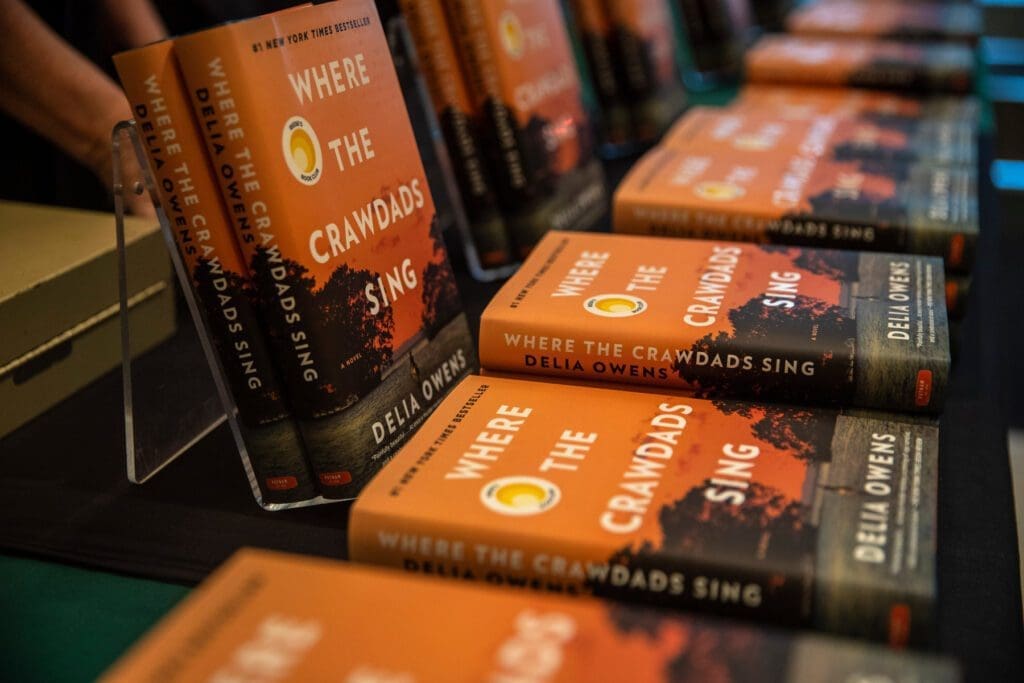
Book Review: Where the Crawdads Sing
Read Ethan, Lily and David’s review of Where the Crawdads Sing.

Where the Crawdads Sing by Delia Owens is a book of both fiction blended with mystery. Kya Clark, the main character, has to face the pain of loneliness, prejudice, and poverty throughout the entire story. Along the way she meets many different characters, like Jumpin’, Tate, Mabel, as well as others, who all contribute to Kya making her journey to grow and become an adult. But one accusation will overshadow all of her breakthroughs. In this coming of age tale, will Kya be able to overcome this hurdle and establish herself in the world?
If this sounds interesting to you, get yourself a copy of Where the Crawdads Sing! Owens’ writing has definitely captured a meaningful story that audiences of many ages can enjoy. That being said, there still are some flaws and things people dislike about the book. So we’re going to share, in our own opinions, parts of the story that are well written and some that could use a little work.
Split Timelines (Pro)
Owens’ usage of timelines definitely added some “flavor” to the story. We get to see Kya’s childhood and what exactly happened to lead her to the second timeline. It also allowed the reader to get a better understanding of her thought process and be able to relate certain events to past experiences. The dates were also a nice touch to the story. When Owens’ used the dates it added suspense and helped the reader speculate more. Not to mention it’s not utilized much in other tales, so it’s another great usage of a writing technique that Owens’ was able to pull off.
Metaphors (Con and Pro)
Metaphors are of course an important piece of literature as a writing technique. So when Owens’ included a bunch of these metaphors it definitely added to the significance of the story. A lot of them involved nature and current or foreshadowed events in the story related to Kya, so it felt like these metaphors held the story together and played their role. At the end of the story, a lot of these metaphors were still fresh in our minds and sometimes we wanted to go back and reread them, which is what a writer should push towards. At the same time though, these metaphors could get a little repetitive. If Owens’ had tried a different approach for these metaphors it might have made it a little cleaner to read.
Character Growth (Con and Pro)
Character growth is always essential for a great story. We can see some good examples and bad examples of this in Owens’ writing. If we take the character, Tate, for example, we can see a great example of character progression and how he changed throughout the story’s duration. At first, Tate only knows Kya through her brother, Jodie, but as the story goes on we see a friendship and even a love interest between Tate and Kya form. With Tate, we can see drama and a big impact on the main character, Kya, but this isn’t always the case with certain characters. Let’s take Scupper, Tate’s dad, as another example. Scupper doesn’t really make that big of an impact on the story as a whole, he’s just mentioned in some of the chapters, here and there. Sure, he tells Tate some important things at the beginning of the story but that’s really all he does until the end of the story, when he decides to come through and support his son.
Description (Con)
When we write, we’re told that we should be descriptive. But we also have to keep in mind that we can be too descriptive at times for our target audiences. Some think Owens’ definitely crosses this line in certain scenes. A clear instance of this is in some of the more intimate, sexual scenes. We can compare these scenes to similar scenes written by other authors. The author Stephen King, who writes very mature horror novels, sometimes uses these scenes but usually they’re quick and wrapped up in just a few sentences. In this book, however, we can sometimes see an entire paragraph dedicated to describing these scenes and it just seems very excessive and unneeded.
As teenagers who have read this book, although many of us loved the story, we feel that the author went into unnecessary depths of detail in these scenes, and it was a little alarming since this was the first time many of us had read something like this. So just keep that in mind if you plan to read this book.
So In Conclusion…
Those are our thoughts on the story but don’t just take our word for it, look into Where the Crawdads Sing, yourself. What do you think of the story? Do you like it or are you not a big fan of it? Do you disagree with anything we’ve said? What do you think Owens’ did well and what she could work on in her writing? Here are some prompts of lens you could think about while reading:
- Developed and refined characters
- A satisfying start and finish to the story
- Conflicting situations
- Styles of writing that promote a reader to think and speculate about a story
Even though the story could use a little work, we all agree that this book was a great choice for the three of us. It brought to light some underlying issues, like prejudice, bullying, and stereotypes in society. It served as a next step to reading advanced novels and altogether it was an enjoyable experience. It had us guessing and shocked at every little twist and turn, so we recommend the next time you need something great to read, give Where the Crawdads Sing, a try.
David is a freshman at Sweet Home High School. He is looking to write for students to provide information for all.

Lily Fisher is a sophomore at Sweet Home High School. She is a very avid writer and reader. She loves to write about many topics, some fiction, some non-fiction, some poetry, some opinion based, and other forms of creative writing. She is a published author of a handful of children’s books and is very happy to be a member of The Panther Eye.


